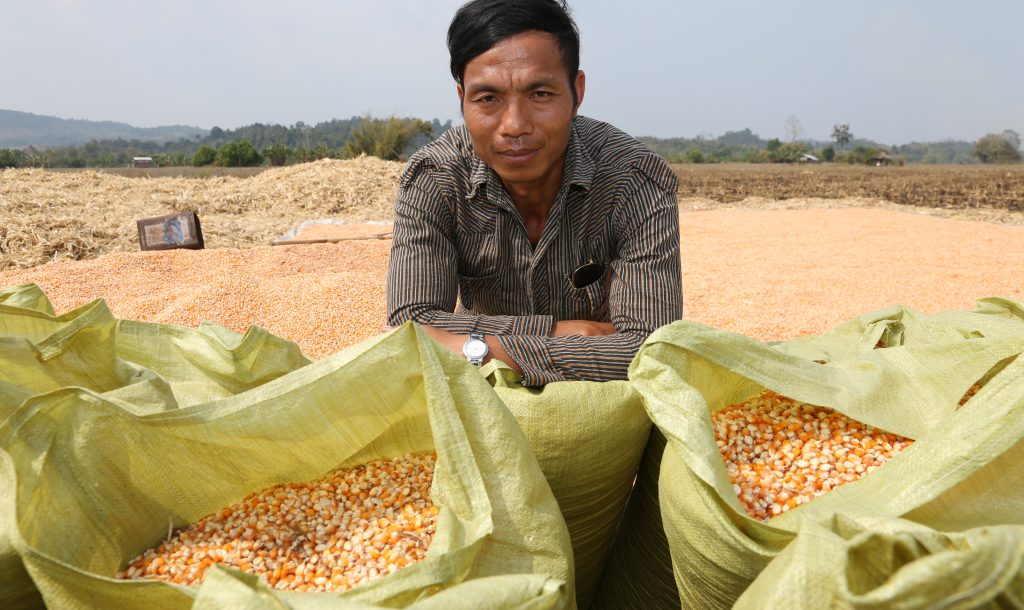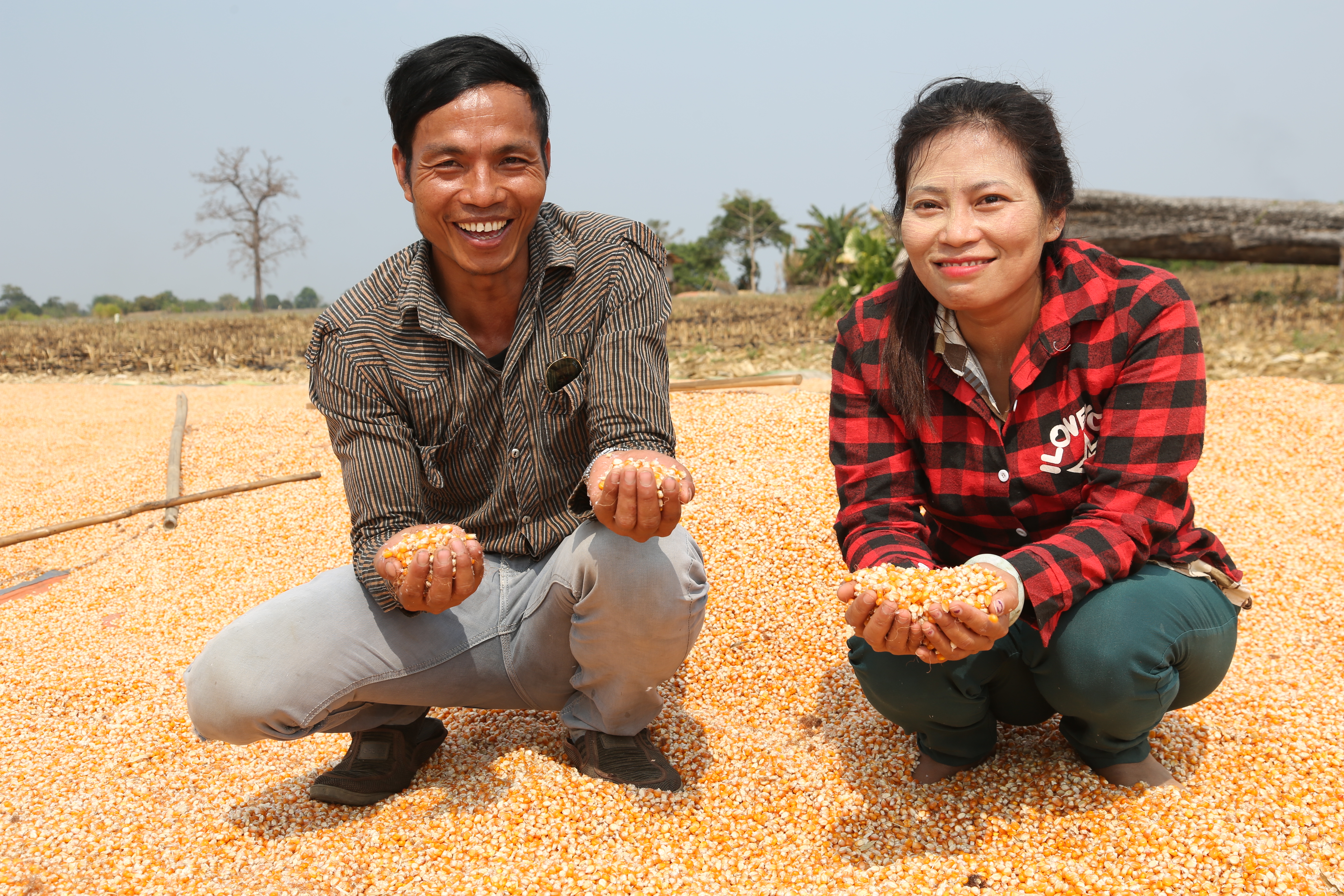This article explores some of the realities of supporting income generation for displaced people in conflict settings, drawing on experiences in Kachin, northern Myanmar, suggesting development and humanitarian actors need to better acknowledge limitations and rethink our approaches.
Since the 2011 resumption of war between the Kachin Independence Army and the Myanmar Armed Forces (Tatamadaw), over 100,000 people continue to be displaced, predominantly from rural, agricultural settings, into urban-based camps with little to no access to land. Ongoing fighting and insecurity means returns home are largely impossible. Escalating armed conflict since mid 2016 and continuing today has displaced or re-displaced over 6,000 people in Kachin, stretching declining humanitarian resources further as needs increase.
Speak with any displaced person and lack of income is one of their primary concerns. But options are limited, and vulnerable to outside shocks. In the shift from farming to urban settings, making an income is difficult, exacerbated by internally displaced persons’ (IDPs) arrival creating labour market saturation. This can also create tension between host communities and IDPs, especially through labour market competition and contestation over resources, often as basic as firewood. The importance of income is about both the material benefit and improving social cohesion.
One program run by my organisation, Oxfam, illustrates some of the opportunities, but also the challenges, in supporting IDP livelihoods. One of the program’s goals is to support income generation through a diversity of activities, underpinned by revolving loans for groups and individuals. Communities develop plans, the community decides on loan recipients, technical skills are improved, loans provided, businesses start and the loans are repaid—then re-circulated to more people. Businesses include soap making, animal raising and other small-scale endeavours, contingent on the context—skills, access to land and market opportunities. Yet as I outline below, outcomes vary greatly.
Conflict kills the crop
Living in an IDP camp in the safe urban centre, Myitkyina, but seeking to put their agricultural skills to use, Hkawn Tsin’s group received a loan and decided to grow mustard—a reliable cash crop used for vegetable oil. Hkawn Tsin explains:
“We had to choose a safe area for the plantation. Our village of origin had been more peaceful, so we decided to grow the crops there… We have been looking for many different land places, but it’s too costly nearby.
When we started, one person was killed nearby—a community forestry leader. Then a militia took over the area. We checked the crop at harvest, but couldn’t take care of the crop in between because of safety risks, so it wasn’t a good yield.”
The net result was a US$365 investment (and labour) for a loss-making return of only US$88, hungry insects the only real beneficiaries.
Conflict evaded, market forces unleashed
Living in the same camp, Hla Htoi’s group took the same approach, but with corn in a different location—with high nearby rents, land of origin was again the only option. Although not safe to stay at the plantation, subdued conflict nearby meant the group could regularly tend to the crop. A bumper yield of over 5,000 kilograms ensued, but Hla Htoi explains that challenges persisted:
“We chose corn because last year the corn price was very high and it’s not very risky—it’s good for the landscape in Kachin. This year, the corn price isn’t good… Companies give credit to many farmers to plant corn, but then they only pay a low price. This made a lower price for everyone because of too much corn being produced.”
Hla Htoi rues that armed conflict further compounds the difficulties:
“We used to sell corn to China, but because of the war, it’s difficult to sell to China. This has also made the prices lower.”
Despite challenges, the group expects a profit of approximately US$730. IDP and non-IDP farmers planting corn in other parts of Kachin and Shan states have also experienced some success, but volatile prices and lack of bargaining power have led to many farmers falling into debt and being forced to sell their land.
What does it mean for humanitarian and development actors?
The situation in Kachin is mirrored in many conflicts globally—rural communities displaced to urban centres, where income generation opportunities are severely limited. Prolonged displacement exacerbates the challenges. Focusing on access to capital, skills and market access, humanitarian and development actors continue searching for the ideal income generation formula. Yet it remains elusive. The differences between Hkawn Tsin and Hla Htoi’s groups’ fortunes are indicative of income generation fragility in conflict settings. So, what can we do differently?
Urban-based livelihoods offer some potential, but in labour saturated and conflict-affected markets, decent income is rare. Innovations for urban contexts remain important, but more critically, we need to embed income generation activities in the broader conflict dynamics. This includes addressing systemic issues. In many cases, securing access to safe land should be a priority—primarily for income generation, but also as a means to improve cohesion between displaced and host communities (such as land rentals that benefit everyone). Not to mention the psychological benefits for displaced people utilising their idle agricultural skills. All actors must also be keeping an eye on the future, taking action to ensure that displaced people can ultimately return to their land of origin. Land rights for displaced people are critical, yet often overlooked during armed conflict.
More broadly, we need to accept that most urban, small-scale income generation activities for displaced people will only ever have a limited impact. Yes, there are positive examples, but we must reorient efforts on supporting peace and the rights of displaced people (including rights to social services, work and land). In essence, income generation activities cannot and should not operate in a silo. Many actors may excuse themselves from ‘peace’ or ‘advocacy’, but if delivering any income generation activity in a conflict setting, there is no escaping the reality that all interventions must be embedded in and address broader conflict dynamics.
……………
Dustin Barter is Programme Manager with Oxfam in Myanmar, working on the European Union-supported Durable Peace Programme referenced in this article.
Header image: Hla Htoi and his corn crop. Credit: Dustin Barter/Oxfam.
 Facebook
Facebook  Twitter
Twitter  Soundcloud
Soundcloud  Youtube
Youtube  Rss
Rss 
